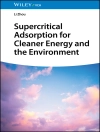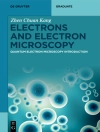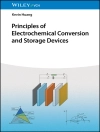The purpose of this book is to convey to the worldwide scientific community the rapid and enthusiastic progress of state-of-the-art quantum chemistry. Quantum chemistry continues to grow with remarkable success particularly due to rapid progress in supercomputers. The usefulness of quantum chemistry is almost limitless. Its application covers not only physical chemistry but also organic and inorganic chemistry, physics, and life sciences. This book deals with all of these topics.
Frontiers of Quantum Chemistry is closely related to the symposium of the same name held at Kwansei Gakuin University at Nishinomiya, Japan, in November 2015. The book’s contributors, however, include not only invited speakers at the symposium but also many other distinguished scientists from wide areas of quantum chemistry around the world.
Jadual kandungan
Rigorous and Empirical Approaches to Correlated Single Particle Theories.- Circular Dichroism Spectroscopy with the SAC-CI Methodology: A Chira Sac Study.- Frontiers of Coupled Cluster Chiroptical Response Theory.- Response Theory and Molecular Properties.- Response Properties of Periodic Materials Subjected to External Electric and Magnetic Fields.- Quantum Chemical Methods for Predicting and Interpreting Second-Order Nonlinear Optical Properties: from Small to Extended p-conjugated Molecules.- Embedding Methods in Quantum Chemistry.- Calculation of Vibrational Spectra of Large Molecules from their Fragments.- Describing Molecules in Motion by Quantum Many-Body Methods.- Relativistic Time-Dependent Density-Functional Theory for Molecular Properties.- Warming Up Density Functional Theory.- Toward a Quantum Chemical Description of Molecular Properties and Chemical Reactions at Extreme Condition of Pressure.- Transition States of Spin-Crossing Reactions from Organometallics to Biomolecular Excited States.- Electron Communications and Chemical Bonds.- Molecular Dynamics Simulations of Vibrational Spectra of Hydrogen-Bonded Systems.- Nuclear Quantum Effect and H/D Isotope Effect on Hydrogen-Bonded Systems with Path Integral Simulation.- Vibrational Linear and Nonlinear Optical Properties: Theory, Methods and Application.- Ab Initio Molecular Dynamics Study on Photoisomerization Reactions: Applications to Azobenzene and Stilbene.- Density Functional Theoretical Studies on Chemical Enhancement of Surface-Enhanced Raman Spectroscopy in Electrochemical Interfaces.- Quantum Chemistry Studies of Overtones and Combinations.
Mengenai Pengarang
Marek Janusz Wójcik
Professor Marek Janusz Wójcik received his Ph. D. and habilitation from Jagiellonian University. He has been a research associate at National Research Council, Canada and University of Chicago, and has been a visiting professor at numerous universities and institutes in Japan, USA, Canada, Sweden, France, Germany, Malaysia and South Africa. He is a professor of Jagiellonian University.
His important contributions include Quantum-Mechanical Models for Spectra of Hydrogen-Bonded Systems, Theoretical Modeling of Vibrational Spectra of Water, Aqueous Ionic Solutions and Ices, Theoretical Studies of Multidimensional Proton Tunneling and Car-Parrinello Simulations of Spectra of Hydrogen-Bonded Crystals.
He received Chevalier Cross of the Order of Rebirth of Poland.
Hiroshi Nakatsuji
Professor Hiroshi Nakatsuji received his Ph.D. from Kyoto University. He completed two years of postdoctoral studies at Yeshiva University, New York and University of North Carolina. From 1990 he was professor at the Graduate School of Engineering, Kyoto University. In 2004 – 2006 he was Director of the Fukui Institute for Fundamental Chemistry and from 2006 he is Director of the Quantum Chemistry Research Institute in Kyoto.
His important contributions include General Methods of Solving the Schrödinger and Dirac Equations, SAC-CI Theory for Molecular Excited and Ionized States, Dipped Adcluster Model for Surface-Molecule Interactions and Reactions, Theory for the Direct Determination of Density Matrix, Intuitive Force Concept for Molecular Geometry and Chemical Reaction and Electronic Mechanism and Relativistic Effect in NMR Chemical Shifts.He received several awards, such as CSJ Award, Fukui Medal and Senior CMOA Medal. He is General Secretary of the International Academy Quantum Molecular Science.
Bernard Kirtman
Professor Bernard Kirtman received his Ph.D. from Harvard University. He spenttwo years at the University of Washington as a research associate and three years at the University of California, Berkeley as an Assistant Professor before joining the faculty at the University of California, Santa Barbara in 1965, where he is currently a Professor in the Department of Chemistry & Biochemistry.
He is internationally well known for his highly cited work in electronic structure theory and computational methods, as well as studies of molecular electronic/vibrational and nonlinear optical properties along with the vector potential approach for the computation of such properties in periodic systems.
He has received the UCSB Academic Senate Distinguished Teaching Award and the ICCMSE Award for Theoretical/Computational Chemistry. An international symposium honoring his scientific contributions was held in Rhodes, Greece in 2009. Professor Kirtman is also a coauthor of the monograph ‘Calculations on Nonlinear Optical Properties of Large Systems’ published by Springer.
Yukihiro Ozaki
Professor Yukihiro Ozaki received his Ph.D. from Osaka University. He spent for two years and a half at National Research Council, Canada as a research associate. He joined Kwansei Gakuin University in 1989, where he is a professor in the Department of Chemistry.
He has been internationally famous for molecular spectroscopy studies including those for vibrational spectroscopy and electronic spectroscopy. He has also been active in application of quantum chemistry to molecular spectroscopy.
He received several international awards such as the Tomas Hirschfield Award, Gerald Birth Award and Bomen-Michelson Award. He is also a coeditor of the book ‘Far- and Deep- Ultraviolet Spectroscopy’ published by Springer.












